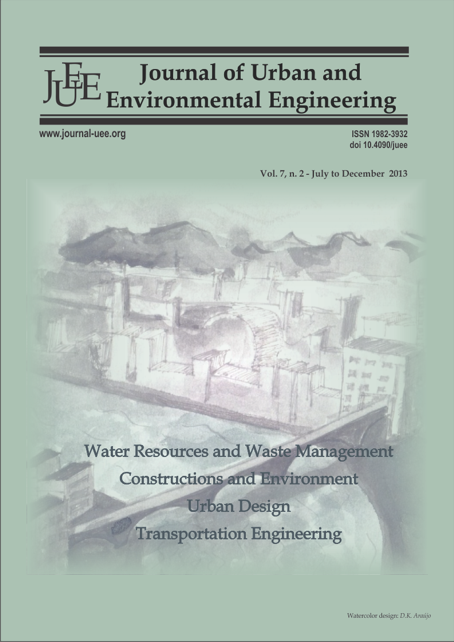VERIFICATION OF THE INFLUENCE OF URBAN GEOMETRY ON THE NOCTURNAL HEAT ISLAND INTENSITY
DOI:
https://doi.org/10.4090/juee.2013.v7n2.286-292Abstract
Nocturnal heat island formation is a prominent phenomenon in urban planning research and thermal comfort. It is characterized by an increased air temperature from the periphery to the center of the cities and is partly caused by the urban geometry. The phenomenon is a result of the influence of the characteristics of urbanization, which alter the energy balance of the cities. Among surveys in this context, the model proposed by Oke (1981) shows its relevance in the area. Using simulations with reduced models, Oke found that the fraction of visible sky negatively correlated with the heat buildup on the surfaces and increased the air temperature. The relationship between the height of the buildings and the width of the path (H/W ratio, height/width) was used to measure the urban geometry in this previous study. Based on that study, this research verified the role of geometry in the formation of an urban heat island in a Brazilian city, aiming to adapt this model to real urban conditions. The methodological procedures rely on the following steps: a study of a theoretical-numerical base model (Oke model, 1981) and adjustment (validation). Thus, the methodology to be employed included urban data collection, which included urban geometry and air temperature, the application of the Oke model and its adjustment. The results found in this investigation corroborate the study of Oke (1981) and demonstrate that urban geometry effectively contributes to the formation of nocturnal heat islands.Downloads
Download data is not yet available.
Downloads
Published
2013-12-08
Issue
Section
Articles




